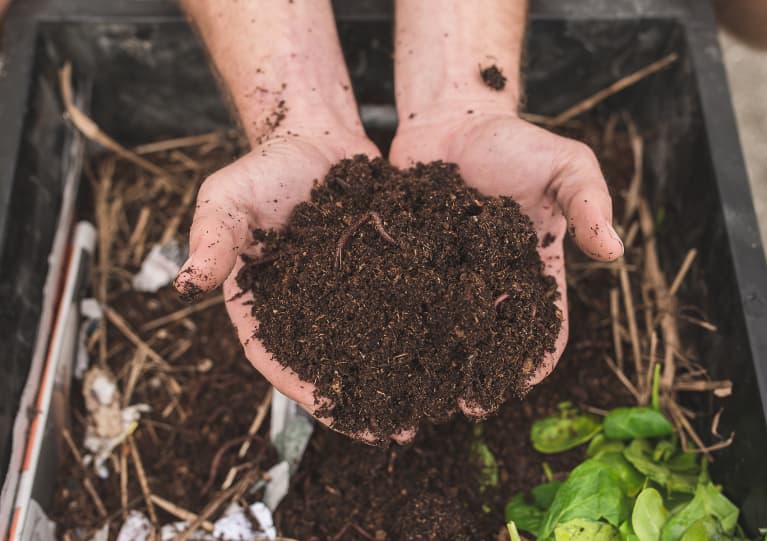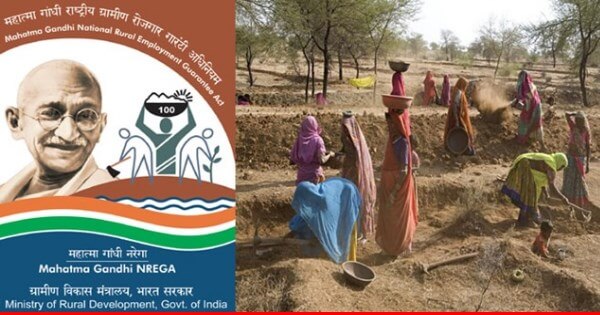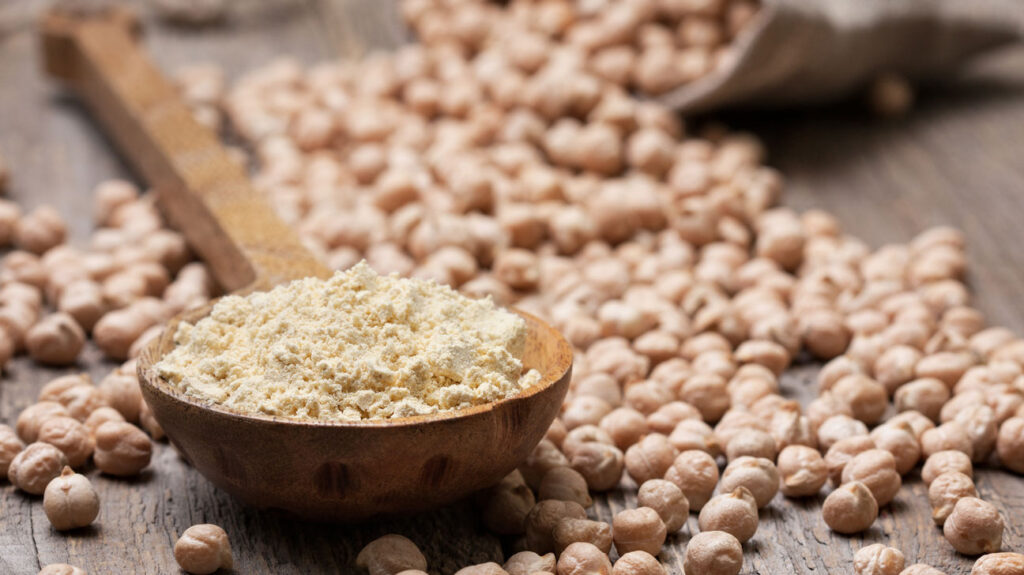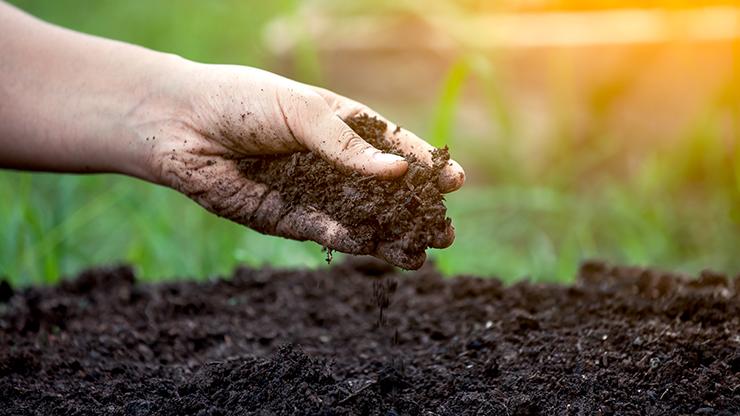INTRODUCTION Rapid-increase-in-population-and-change-in-the-lifestyle-in-India-have-resulted-in-a-dramatic-increase-in-municipal-solid-waste-(MSW).-MSW-encompasses-household-refuse,-institutional-scraps,-street-sweepings,-commercial-wastes,-as-well-as-construction-and-demolition-debris.-The-total-MSW-generation-in-India-is-around-48-million-tons-per-annum-and-this-would-increase-to-300-million-tons-by-the-year-2047.-The-accumulation-of-large-amount-of-MSW-creates-several-problems-in-city-and-nowadays-the-management-has-become-most-significant-challenge-in-front-of-Municipal-Corporation-of-many-cities-in-India.-Municipal-solid-waste-from-Indian-cities-is-estimated-to-have-high-organic-matter-content-and-all-essential-nutrients-that-could-be-recycled-as-vermicompost-and-compost.-Composting-and-vermicomposting-are-considered-essential-recycling-tools-of-MSW,-as-large-amounts-of-MSW-composts-are-frequently-used-in-agriculture-to-meet-crop-nutrients–requirements-and-for-the-addition-of-organic-matter-[1-3].-MSW-vermicomposting-and-composting-is-being-encouraged-in-many-countries-globally,-and-researchers-have-experienced-the-benefits-of-rising-MSW-in-the-field.-With-a-view-present-study-was-undertaken- MATERIALS-AND-METHODS In-the-present-study-municipal-solid-waste-was-collected-from-Latur-city-and-required-quantity-of-vermicompost-and-compost-was-prepared-from-municipality-solid-waste-(MSW)-as-per-standard-procedure-and-its-characterization-for-Viz.-pH,-Electrical-conductivity,-Organic-carbon,-available-nutrients-N-P-&-K-and-DTPA-extractable-micronutrients-and-heavy-metals-were-analysed-per-standard-procedure.-A-field-experiment-was-conducted-at-the-Research-Farm,-Department-of-Soil-Science-and-Agricultural-Chemistry,-Latur-College-of-Agriculture.-The-experimental-plot-was-laid-out-in-a-randomized-block-design.-The-recommended-and-popular-variety-Aakash-(BDNG-797)-of-chickpea-was-used-for-this-experiment-with-seven-treatments-viz,-T1—RDF,-T2—RDF-+-vermicompost-of-MSW-@-2.5-t-ha-1,-T3—RDF-+-vermicompost-of-MSW-@-5-t-ha-1,-T4—RDF-+-vermicompost-of-MSW-@-7.5-t-ha-1,-T5—RDF-+-compost-of-MSW-@-2.5-t-ha-1,-T6—compost-of-MSW-@-5-t-ha-1,-T7—compost-of-MSW-@-7.5-t-ha-1.-Vermicompost-and-compost-of-MSW-was-applied-at-the-time-of-sowing-and-recommended-dose-of-fertilizer-(25:50:00-N:-P:-K)-was-applied-in-the-same-time.-The-soil-and-plant-samples-was-collected-after-harvest-of-crop-and-analyzed-for-physical-and-chemical-properties-of-soil-and-nutrients-content-in-plant.-The-yield-data-were-recorded-in-qha-1and-total-nutrients-uptake-was-calculated.– RESULTS-AND-DISCUSSION Vermicomposting-of-MSW Municipal-solid-waste-was-collected-from-the-Latur-city.-The-collected-MSW-was-air-dried-separately-spreading-over-a-polythene-sheet-for-48-hours.-The-air-dried-samples-were-partially-decomposed-for-three-weeks-before-being-put-into-the-vermicomposting-process.-A-convenient-pit-of-a-size-2×1×1m-was-constructed-with-a-concrete-base.-The-pit-was-filled-with-partial-decomposed-MSW-in-layers-15-to-20-cm-thick-and-cow-dung-slurry-was-added-in-the-ratio-of-3:1-and-released-about-1000-earthworms-(Eisenia-Foetida-)-and-maintained-the-humidity-around-65-to-75-per-cent-by-watering-and-also-inoculated-cowdung-which-served-as-attractive-feeding-resource-for-earthworms.-The-vermicomposting-processes-were-carried-out-for-60-days-and-vermicompost-was-ready-after-75-days-for-application. The-vermicompost-was-alkaline-(pH-7.45)-and-electrical-conductivity-was-1.85-dSm-1.-Organic-carbon-content-was-20.17-per-cent,-total-N,-P,-K-were-0.72,-0.33,-0.45-per-cent-respectively.-The-micronutrients-and-heavy-metals-in-the-MSW-vermicompost-were-estimated-and-observed-their-concentration-Cu—60.72-mg-kg-1,-Mn—343.17-mg-kg-1,-Zn—72–mg-kg-1,-Fe—1287-mg-kg-1,-Pb—21.05-mg-kg-1,-Cr—12.53-mg-kg-1-and-Ni—12.75-mg-kg-1.-Cadmium-was-found-below-detectable-level-in-MSW-vermicompost. Composting-of-MSW- The-compost-preparation-was-carried-out-in-pits-size-2×1×1m-by-adopting-aerobic-decomposition-process.-MSW-was-filled-in-layers-15-to-20-cm-thick-and-cow-dung-slurry-was-added-in-the-ratio-of-3:1.-To-improve-the-aeration,-contents-in-the-pits-were-turned-once-in-fifteen-days.-After-seven-days,-efficient-cultures-of-Trichoderma-harizanum-were-added,-enhancing-the-decomposition-rate.-The-compost-was-ready-after-95-days-for-application.- The-compost-was-alkaline-(pH-7.90)-and-electrical-conductivity-was-1.60-dSm-1.-Organic-carbon-content-was-17.16-per-cent,-total-N,-P,-K-were-0.60,-0.25,-0.38-per-cent-respectively.-The-micronutrients-and-heavy-metals-in-the-MSW-compost-were-estimated-and-observed-their-concentration-Cu—42.11-mg-kg-1,-Mn—250.67-mg-kg-1,-Zn—62-mg-kg-1,-Fe—1224-mg-kg-1,-Pb—22.9-mg-kg-1,-Cr—15.05-mg-kg-1-and-Ni—15.43-mg-kg-1.-Cadmium-was-found-below-detectable-level.- The-comparative-study-of-MSW-vermicompost-and-compost-was-found-that-the-MSW-vermicompost-having-more-amount-of-organic-carbon-(20.17%)-than-the-MSW-compost-(17.16-per-cent)-which-was-increased-by-14.6-%-(-Table-1).-It-was-also-observed-that-essential-nutrients’-availability-was-more-in-MSW-vermicompost-comparatively-than-the-MSW-compost-(5.14-to-44.11-%).-The-lesser-heavy-metal-concentration-values-were-found-in-MSW-vermicompost-compared-to-MSW-compost-(Table-1).-The-reduction-in-concentration-of-heavy-metals-in-the-vermicompost-might-be-due-to-volatilization-and-leaching-losses-and-immobilization-by-the-microorganisms.–During-vermicomposting,-the-earthworm-body-acts-as-a-bio-filter-that-can-purify-and-disinfect-and-detoxify-solid-wastes-[4].- Table-1.-Characteristics-of-vermicompost-and-compost-of-MSW Physicochemical-properties-of-soil The-result-regarding-physical-properties-indicated-that-soil-bulk-density-decreased-with-increased-doses-of-vermicompost-and-compost-of-MSW.-Lowest-bulk-density-of-soil-(1.57-mg-cm-3)-was-recorded-with-application-of-RDF-+-vermicompost-of-MSW-@-7.5-t-ha-1-(T4)-followed-by-RDF-+-compost-of-MSW-@-7.5-t-ha-1.-Lowering-the-bulk-density-in-fertilized-and-manured-plots-may-be-due-to-higher-organic-matter,-more-pore-space-and-good-soil-aggregation-[5]-and-similar-result-was-also-reported-by-[6]. The-result-regarding-chemical-properties-(Table-2)-of-soil-viz.-pH,-EC-and-CaCO3-did-not-affected-significantly.-However,-organic-carbon-showed-significant-treatments-result-under-MSW-compost-and-vermicompost.-The-soil-pH-(7.47),-EC-(0.31dsm-1)-and-calcium-carbonate-(7.83%)-were-recorded-lowest-due-to-application-of-MSW-vermicompost-with-combination-of-inorganic-fertilizers-i.e.-RDF-+-vermicompost-of-MSW-@-7.5-t-ha-1.-The-higher-CaCO3-was-recorded-in–treatment-T1-–-control-(9.50%).-Further-data-revealed-a-decrease-in-CaCO3-content-in-the-post-harvest-soil-samples-over-the-initial-(9%)-soil-samples.-This-indicated-that-the-application-of-organic-manure-reduced-the-CaCO3-content-in-soil-might-be-due-to-sufficient-organic-matter-in-the-soil.-(Jenkinson-and-Johnson,-1977).-However,-organic-carbon-(7.77-g-kg-1)-significantly-increases-due-to-the-application-of-RDF+-vermicompost-of-MSW-@-7.5-t-ha-1-followed-by-the-RDF-+-compost-of-MSW-@-7.5-t-ha-1-which-was-significantly-superior-over-control.-The-increase-in-organic-carbon-might-be-due-to-addition-of-organic-matter-in-soil-through-vermicompost-and-compost.-Similar-results-were-also-observed-by-Walter-et-al.-(2006)-composted-municipal-solid-waste-(MSW)-applied-at-the-rate-of-0,-40,-80-or-120-Mg-ha−1-significantly-increased-soil-organic-carbon-levels-after-its-application. Table2.-Effect-of-MSW-vermicompost-and-compost-on-soil-physical-and-chemical-properties Available-nutrients-status-in-soil: The-available-nutrients-viz.-N,–P-and-K-in-soil-were-significantly-affected-with-a-application-of-RDF-+-vermicompost-of-MSW-@-7.5-t-ha-1-–(T4)-recorded-significantly-higher-available-N-(-235.20-kg-ha-1),-P-(-24.17-kg-ha-1)-and-K-(-619.07-kg-ha-1)-in-soil-after-harvest-of-chickpea-followed-by-treatment-RDF-+-compost-of-MSW-@-7.5-t-ha-1-(T7).-The-avaibility-of-nutrients-increases-with-application-of-compost-and-vermicompst-of-MSW-its-creates-the-favorable-soil-condition-under-organic-manures-of-MSW-which-act-as-storehouse-of-microorganism,-is-responsible-for-needed-nutrients-transformation-beside-provide-the-favorable-soil-moisture-condition-and-physical-properties-which-help-in-mineralization-of-N-leading-to-increase-the-availability-of-nitrogen-in-soil.-These-results-corroborate-the-findings-of-[10].-Beneficial-effect-of-MSW-vermicompost-and-compost-it-increased-the-solubility-of-P-in-soil-and-reduces-the-fixation-whereas-k-availability-includes-minimizing-the-losses-from-leaching-by-retaining-K-ions-in-exchange-site-,-solubilization-of-insoluble-component-through-the-action-of-organic-acid-relies-during-decomposition-besides-minimizing-losses-due-to-fixation-[7]-similar-result-have-also-been-reported-by-[8]-and-[9]-reported-that-application-of-phosphorus-and-potassium-increases-the-NPK-of-the-soil-with-increases-in-the-concentration-of-the-nutrients-which-increases-the-metabolic-activities-in-plant.–Increasing-the-doses-of-compost-increased-the-levels-of-nutrients-in-soil-[11].-The-status-of-DTPA-extractable-micronutrients-was-found-maximum-viz.-Fe-(2.13-mg-ka-1),-Mn-(4.70-mg-kg-1),-Zn-(0.88-mg-kg-1),-Cu-(4.08-mg-kg-1)-with-the-application-of-RDF-+-vermicompost-of–MSW-@-7.5-t-ha-1-(T4)-followed-by-application-of–RDF-+-compost-of-MSW-@-7.5-t-ha-1-(T7)-and-which-significant-over-control.-The-results-agreed-with-the-findings-of-[12]-who-reported-that-organic-nutrient-sources-increased-the-micronutrient-status-of-soil-against-control.-Similar-result-reported-by-[13]-application-of-MSW-compost-significantly-increased-the-macro-and-micronutrients-level-in-soil.— DTPA-extractable-heavy-metals-in-soil: DTPA-extractable-heavy-metals-viz.-Cr,-Pb,-Ni–in-soil-were-significantly-affected-due-to-the-application-of-MSW-vermicompost-and-compost-in-chickpea-and-which-were-found-below-the-permissible-limits-in-all-the-treatments-(Table-3).-Cadmium-was-found-below-detectable-level-in-soil.-The-treatment-with-the-application-of-RDF-+-compost-of-MSW-@-7.5-t-ha-1-(T7)-recorded-significantly-higher-content-of-Cr,-Pb,-Ni-(0.14,-1.01,-0.86-mg-kg-1-respectively)-in-soil-followed-by-treatment-with-the-application-of-RDF-+-vermicompost-of-MSW-@-7.5-t-ha-1-(T4).-The-minimum-values-were-recorded-with-treatment-T1-(RDF)-control.-The-results-agreed-with-the-findings-of-[14]-reported-that-the-soil-total-Zn,-Pb,-Ni-and-Cu-also-increased-in-the-MSW-treated-soils-compared-to-the-controls.-However,-levels-were-still-below-the-maximum-allowed-by-Spanish-legislation.-[15]-reported-increased-contents-of-DTPA-extractable-heavy-metals-by-the-addition-of-urban-compost-to-the-soil-in-the-order-of-Zn->-Pb->-Ni->-Cu->-Mn.-The-heavy-metal-concentration-in-the-soil-after-application-of-MSW-vermicompost-and-compost-was-within-the-acceptable-limits-compared-with-regulatory-standards-CPCB.-There-was-no-negative-impact-on-the-soil-after-application.-Hence,-MSW-vermicompost-and-compost-can-be-used-as-organic-manure-for-improving-soil-quality. Content-of-nutrients The-NPK-content-in-chickpea-was-increased-with-increasing-Compost-and-Vermicompost-of-MSW-(Table-4).–The-maximum-N-P-K-concentration-in-straw-and-grain-was-recorded-with-the-treatment-T4-–RDF-+-vermicompost-of-MSW-@-7.5-t-ha-1-followed-by-treatment-T7-–RDF-+-compost-of-MSW-@-7.5-t-ha-1.-Whereas-the-treatment-T1-(RDF)-was-found-minimum-concentration-of-NPK-in-chickpea-straw-and-grain-(Table-4).-The-reason-for-high-NPK-content-in-grain-and-straw-of-chickpea-might-be-because-application-of-MSW-vermicompost-and-compost-helps-in-mineralization-of-N-in-soil-thus-making-it-available-to-the-plants-and-serves-the-more-nutrients,-resulting-in-better-absorption-and-utilization-of-plant-nutrients,-thus-resulted-in-to-more-N-P-K-content-and-uptake-in-seed-and-straw-[16]. DTPA-micronutrients-viz.-Zn,-Fe,-Cu-and-Mn–in-plants-were-significantly-affected-due-to-the-application-of-MSW-vermicompost-and-compost-in-chickpea-(Table-5).-The-treatment-with-application-of–RDF-+-vermicompost-of-MSW-@-7.5-t-ha-1-recorded-significantly-higher-content-of-Total-Zn-(64.97-mg-kg-1),-Fe-(-241.57mg-kg-1),-Cu-(42.90-mg-kg-1),-Mn-(112.16-mg-kg-1)–in-plants-of-chickpea-followed-by-treatment-RDF-+-compost-of-MSW-@-7.5-t-ha-1-(T7).-The-minimum-values-of-nutrients-were-recorded-with-treatment-T1-control-(RDF).-The-above-result-indicates-that-the-application-of-organic-and-inorganic-fertilizers-observed-the-highest-level-of-micronutrient-availability.-This-might-be-due-to-the-synergistic-effect-of-MSW-vermicompost-and-compost,-which-brought-significant-improvement-in-soil-available-micronutrient.-These-results-were-in-agreement-with-[17-18]-found-the-better-results-on-availability-of-DTPA-extractable-micronutrients-after-post-harvest-crop. Table-5.-Effect-of-MSW-vermicompost-and-compost-on-plant-micronutrients Uptake-of-N-P-and-K The-total-uptake-of–N,-P-and-K,-were-significantly-increased-due-to-MSW-vermicompost-and-compost-in-chickpea-(Table-6).-Significantly-maximum-uptake-of-total-N-(142.27-kg-ha-1),-P-(18.27-kg-ha-1)-and-K-(90.33-kg-ha-1),-were-noted-with-treatment-T4—RDF-+-vermicompost-of-MSW-@-7.5-t-ha-1,-followed-by-treatment-RDF-+-compost-of-MSW-@-7.5-t-ha-1.-Whereas,-minimum-N,-P-and-K-uptake-was-recorded-with-treatment-T1-(RDF).–This-increase-in-uptake-of–NPK–in-chickpea-crop-might-be-due-to-MSW-vermicompost-and-compost-resulted-into-greater-availability-of-NPK-through-organic-matter.-Duggan-and-Wiles-(1976)-the-incorporation-of-the-garbage-compost-leads-to-significant-increase-in-plant-NPK-content.-[19]-found-that-the-addition-to-soil-of-512-metric-tones-of-compost-per-hectare-resulted-in-50-times-more-NPK-by-millet-crops-compared-to-control-plots.-Similar-findings-were-also-reported-by-[20]-application-of-urban-compost-@-11-t-ha-1-resulted-in-maximum-uptake-of-N,P-and-K-by-sweet-sorghum,-which-was-on-par-with-the-application-of-sewage-sludge-(2.68-t-ha-1)-+-urban-compost-(5.5-t-ha-1). CONCLUSION The-above-results-indicated-that-the-concentration-of-heavy-metals-was-found-within-permissible-limits-in-vermicompost-and-compost-of-MSW-and-shows-that-it-can-be-used-as-soil-fertilizer-as-its-negative-impact-seems-to-be-less-and-it-is-safe-for-application.-Vermicompost-and-compost-of-MSW-were-rich-in-NPK-and-micronutrients,-which-enhance-soil-fertility.-They-contain-a-high-amount-of-organic-matter,-which-improves-the-availability-of-nutrients-and-increases-growth-and-yield-of-chickpea.-Therefore,-MSW-vermicomposting-and-composting-have-become-important-tools-of-MSW-recycling-all-over-world-wide. ACKWLEDGEMENT– The-work-was-supported-by-Department-of-Soil-Science-and-Agricultural-Chemistry,-College-of-Agriculture-Latur,-Vasanthrao-Naik-Marathwad-Krishi-Vidyapeet,–Parbani-and-Latur-Municipal-Corporation,–Latur–(MH),-India.- Get the all images and tables here… REFERENCES Ananda,-M.G.,-Ananda,-M.R.,-Reddy,-V.C-and-Kumar,-M.Y.A.-(2006)-Soil-pH,-electrical-conductivity-and-organic-carbon-content-of-soil-as-influenced-by-paddy-groundnut-cropping-system-and-different-organic-sources.-Environment-and-Ecology-(1):-158-160. Dakshinamoorthy,-M.-Santhy,P.-Selvi,D.and-Mathan,K.K.(2002)-Susttenance-of-crop-productivity-and-soil-fertility-on-an-Inseptisols-in-a-long-term-fertilizer-experiments-.-Proceedings-of-International-Conference-on-Managing-Natural-Resources-for-Sustainable-Agriculture-Production-in-the-31st-Century,-New-Delhi-INDIA,-3:1336-1337 Duggan,-J.C-and-Wiles,-C.C.-(1976).-Effect-of-municipal-conincets-and-nitrogen-fertilizer-on-selected-soils-and-plants.-Compost-Sci.-17:-2431. Elayarajan,-M.,-Sarahya,-S-and-Arulmozhiselvan,-K.-(2015)-Effect-of-inorganic-fertilizer-and-organic-manure-on-yield-and-nutrient-uptake-by-maize-hybrid-under-maize-sunflower-cropping-sequence-in-typic-hyplustalf.-Karnataka-J.-Agric.-Sci.-28-(1):-29-33. Garcia-Gil,-J.-C.,-Plaza,-C.,-Soler-Rovira,-P-and-Polo,-A.-(2000)-Long-term-effects-of-municipal-solid-waste-compost-application-on-soil-enzyme-activities-and-microbial-biomass.Soil-Biol.-Biochem.-32:-1907-1913.- Hortenstine,-C.C-and-D.E.-Rothwell-(1969)-Evaluation-of-composted-municipal-refuse-as-a-plant-nutrient-source-and-soil-amendment-on-Leon-fine-sand.-Soil-Crop.-Sci.-Soc.-Fla.-Proc.-29:-312-19. Hargreaves,-J.C.,-Adl,-M.S.-and-Warman,-P.R.-(2008)-A-review-of-the-use-of-composted-municipal-solid-waste-in-agriculture.-Agriculture-Ecosystem-and-Environment.-123:1-14.– Jenkinson,-D.S-and-Johnson,-A.E.-(1977)-Soil-organic-matter-in-the-Hoosfield-continuous-barley-experiment.-Rothamsted-Experiment-Station.–Annual-Report.-1976,-Prt-–-II,-pp-87-101. Jardao,-C.P,-Nascents,-C.C,-Cecon,-P.R,-Fontes,-R.L.F-and-Pereira,-J.L.-(2006)-Heavy-metal-availability-in-soil-amended-with-composted-urban-solid-wastes.-Environmental-Monitoring-and-Assessment-112(1/3):-309-326. Kadam,-P.D.,-Vaidya-,P.H.,-Dhawan,-A.-S.-and-Ingole,-A.-J.-(2017)-Effect-of-Tank-silt-and-organicmanures-on-soil-moisture,-nutrients–availability-in-soil,-yield-and-uptake-of-okra-Bull.-Env.-Pharmacol.-Life-Science.6(3):-640-644. Kaviraj,-S.,-Sharma,-S.-(2003)-Municipal-solid-waste-management-through-vennicomposting-employing-exotic-and-local-species-of-earthworms.-Bioresource-Technology.-90:-169-173. Mishra,-V.K-and-Sharma,-R.B.-(1997)-Effect-of-fertilizers-alone-and-in-combination-with-manure-on-physic-chemical-properties-and-productivity-of-vertisol-under-Rice-based-cropping-systems.-Journal-of-Indian-Society-Soil-Science.-45-(1):-84-88. Ortega,-R.,-Gomez,-M–and-Gallarado-Lara,-F.-(1993)-Town-refuses-compost-as-a-potential-source-of-zinc-to-plants.-Proc.-Int.-Conf.-Heavy-Metals.1:487-489. Pezeshkpour,-P.,-Ardakani-,M.R.,-Paknejad-,F-and-Vazan,S.-(2013)-Effects-of-Vermicompost-,-Mycorrhizal-Symbiosis-and-Biophosphate-soulbilizing-Bacteria-on-seed-yield-and-quality-of-Chickpea-as-Autumn-Plantation-in-rain-fed-Conditions.-Bull.-Env.Pharmacol.-Life-Sci.-3-(2):–53–58. Rahul,-K-and-Shwetha-S.-(2011).-Removal-of-pathogens-during-vermin-stabilization.-J.-Envi.-Sci.-Tech.-4:-621-629 Reddy,-R.S.,-Reddy-V.C.,-Ramakrishna-Parama-V.R-and-Pampa-Samanta.-(2007)-Effect-of-sewage-sludge,-urban-compost-and-FYM-on-juice-quality-and-soil-nutrient-status-of-sweet-sorghum-(Sorghum-bicolor-(L.)-Mouench.–J.-Soils-and-Crops-.17(1):-30-34. …
Quality of Vermicompost and Compost of Municipal Solid Waste (MSW) and their Effect on Soil Characteristics, Nutrients Content, Uptake and Yield of Chickpea Read More »













